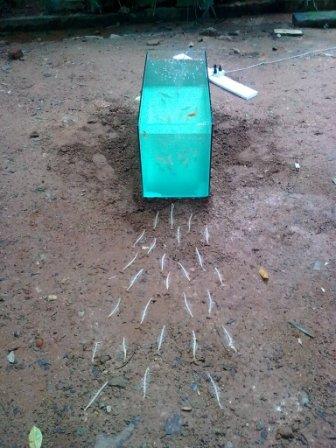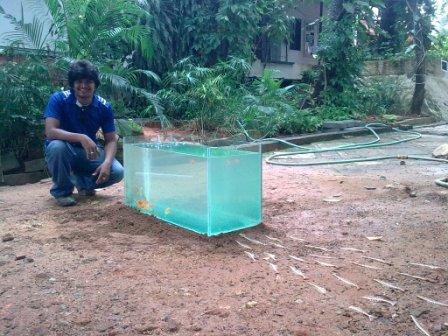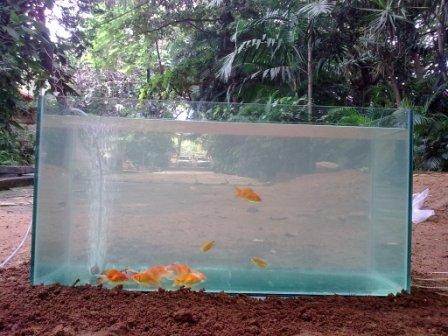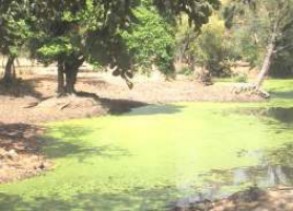/topics/contamination-pollution-and-quality
Contamination, Pollution and Quality
The deepest cut: Political ecology in the dredging of a new sea mouth in Chilika lake - Orissa (India)
Posted on 21 Sep, 2010 09:19 AMThis paper published in the journal Conservation and Society reassesses/debates the decision taken by the government to dredge a new sea mouth in the Chilika Lake in Orissa, India, which was based on Geographical Information Systems (GIS) studies.
The paper argues that decisions such as these need to be understood and evaluated by taking into consideration not only the underlying technical aspects, but by also exploring the political and historical contexts in which decisions are taken.
Groundwater management: Conceptual framework – A presentation by ACWADAM
Posted on 20 Sep, 2010 08:36 PMThis presentation by ACWADAM deals with the conceptual framework of groundwater management.
Manual on water supply and treatment - CPHEEO (MoUD)
Posted on 15 Sep, 2010 11:17 PMThis manual has been developed by the Central Public Health and Environmental Engineering Organisation (CPHEEO), a department under the Ministry of Urban Development (MoUD) and serves as a standard guide in public health engineering by providing a code of day to day practice for public health engineers to follow.
Manual on sewage and sewerage treatment - CPHEEO (MoUD)
Posted on 15 Sep, 2010 11:07 PMThis manual has been prepared by the Central Public Health and Environmental Engineering Organisation (CPHEEO), a department under the Ministry of Urban Development (MoUD) and aims at meeting the professional needs of practising engineers dealing with the sanitation sector in the country, that focuses on achieving the goal of 'sanitation for all' within a reasonable timeframe.
The manual is a revised version of the earlier one, which was developed in 1977 and was widely used by field engineers engaged in sewerage and sewage treatment. However, a need was felt to revise and update the earlier manual taking into consideration the advancement in technology.
Manual on operation and maintenance of water supply systems - CPHEEO (MoUD)
Posted on 15 Sep, 2010 10:58 PMThis manual has been developed by the Central Public Health and Environmental Engineering Organisation (CPHEEO), a department under the Ministry of Urban Development (MoUD) and is intended primarily for the managers and technicians in-charge of the O & M of the urban drinking water supply systems.
The aim of the manual is to serve as a guide for strengthening the technical, operational and managerial capabilities required of the concerned personnel to operate and maintain water supply services as per acceptable norms of quantity, quality, sustainability, reliability and cost.
ECO Sanitation - A beneficial toilet
Posted on 13 Sep, 2010 12:27 AMA brochure from Utthan about Eco-sanitation produced with support from Arghyam.
Seeds of Hope – Forestry - A Lokayan and Planning Commission study
Posted on 10 Sep, 2010 11:50 PMThis set of case studies is a part of a book prepared by Lokayan in collaboration with the Planning Commission titled “Seeds of Hope", covering themes of agriculture, biodiversity, education, forestry, governance, health, movements and water. The case studies related to forestry are summarized below:
International conference on environment audit - Concerns about water pollution - CAG (2010)
Posted on 10 Sep, 2010 05:15 PM This link on the CAG website provides the details of an international conference that was held on 15-16 March 2010, in the backdrop of the environmental audit proposed by the the Comptroller and Auditor General (CAG) of India, for management and conservation of the environment .
This link on the CAG website provides the details of an international conference that was held on 15-16 March 2010, in the backdrop of the environmental audit proposed by the the Comptroller and Auditor General (CAG) of India, for management and conservation of the environment .
The purpose of this conference was to deliberate on the causes of pollution, action taken by governments and civil society to address this and environmental, management and legal interventions needed to put lakes, rivers and ground water on the path of sustainability.
More than 20 experts on water and water pollution issues were invited to share their views as panelists during the conference. Apart from these distinguished panelists, the heads of supreme audit institutions from countries like Austria, Maldives, Bangladesh and Bhutan were also present to share their experiences regarding audit of water pollution in their countries.
The essential water : An installation by Sridhar Gangolli at the premises of Alliance Francaise de Bangalore
Posted on 09 Sep, 2010 10:32 AMSridhar Gangolli, an artist with the concern about the life and the living, is once again on the pitch of art. In each of his works of art, he tries to be fresh and spontaneous. He bats with the objects and bowls some thoughts, thus he makes his art.



Restoration of traditional small water bodies in Braj - The South Asian Journal of Tourism and Heritage
Posted on 01 Sep, 2010 02:28 PM This paper published in the South Asian Journal of Tourism and Heritage begins by highlighting the importance of the traditional small water bodies in Braj, commonly known as kunds, as important freshwater sources as well as an important part of the culture and the traditions of the area.
This paper published in the South Asian Journal of Tourism and Heritage begins by highlighting the importance of the traditional small water bodies in Braj, commonly known as kunds, as important freshwater sources as well as an important part of the culture and the traditions of the area.
There were 1000 such kunds, which used to be the source of fresh water in Braj in earlier times. The water was used for multiple purposes like irrigated agriculture, domestic uses, drinking water for cattle, bathing etc. Due to rapid urbanisation, lack of maintenance and prolonged negligence in the last 50-100 years, most of the kunds today have become silted up and are nearing extinction.
The impending crisis for fresh water has forced the planners and policy makers to take cognizance of these traditional water bodies and an urgent need has been identified for taking necessary measures to restore the kunds. The present study thus aims at understanding the reasons for deterioration of the kunds and makes some technical suggestions for revival of these kunds.





